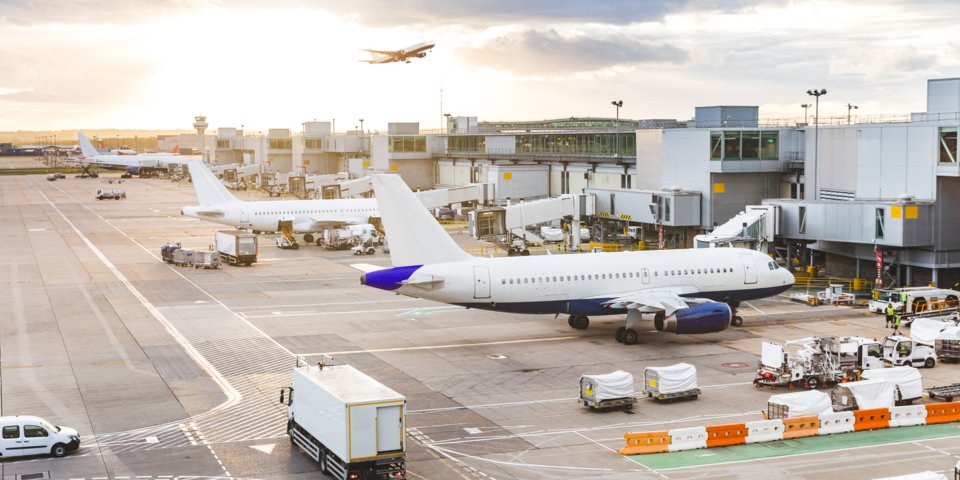
One piece of luggage that’s gone missing during a coast-to-coast trip. An overbooked flight where passengers are bumped in exchange for cash. A ground service equipment (GSE) vehicle that — because it’s in the wrong place at the wrong time — causes a departure delay at the gate.
The list of things that can go wrong at an airport on any given day is long. In fact, to have passengers step off their flights on time, with their luggage, and happy with the experience, relies on the smooth running of a complex logistics network.
The average flier sees just a small slice of what it takes to run an airport. From baggage handling to security to ongoing airplane maintenance — plus the daily effort that goes into coordinating passengers and employees within these expansive facilities — airport operators have a lot to manage.
The process isn’t going to get any easier. By 2037, total global air passenger numbers will grow to 8.2 billion. To support that growth, the global aircraft fleet is expected to increase by nearly 50% over the next seven years and, by 2025, encompass more than 34,000 planes.
Managing this rapid growth, while also driving corporate growth, minimizing operational costs, and maintaining profitability will present a host of new challenges for airports. To overcome these hurdles, airports will rely on a combination of smart management techniques, good data analysis, and a state-of-the-art technology infrastructure.
With the number of connected devices being used worldwide now exceeding 17 billion — and expected to grow to 22 billion by 2025 — connectivity will become increasingly important for airports that want to streamline their operations. That should be music to the ears of airport operators, all of whom are grappling with some of the highest operating costs of any industry.
Inseego addresses these and other challenges using IoT solutions that help airports monitor and track their assets. Powered by Sprint, the solution also helps airports keep tabs on usage and maintenance.
KLM Dutch Airlines, for example, was dealing with major challenges with its GSE billing — namely because it shares those assets with other airlines. Working with Inseego, the airline digitized its GSE asset usage (through the use of real-time location tracking and IoT) down to the second, and now saves 2,000 hours of lost productivity a year.
Layer 5G and its transmission rates of gigabit speeds, and the proposition gets even sweeter for the modern-day airport, whose main goal is to create an overall better passenger experience. As 5G continues to evolve and go mainstream, the mobile technology will help operators create a technology ecosystem that not only fits their budgets, but that’s also held to the strictest security and safety standards.
For example, though passengers may be inconvenienced by a flight delay or a lost piece of luggage, AI, big data, and machine learning supported by 5G will help airports anticipate and resolve such issues before they turn into major customer service problems.
Intelligent airport networks will also help revolutionize the passenger experience, according to AviationPros, which points to ground operations, security checkpoints, runway monitoring, baggage handling, and building management as just a few of the areas that could be transformed in the near future. Beacons and proximity insights will help streamline operations, for example, while timely data and analytics will deliver higher levels of visibility. At the heart of it all will be intelligent, 5G-enabled wireless networks.
As passenger demand grows and airport fleets increase in size, IoT and 5G usage will grow exponentially, effectively changing the aviation and aerospace industry as we know it. In fact, AviationPros anticipates a flurry of 5G activities over the next 20+ months, with larger commercial availability hitting in 2020 and post-2020. IoT will be used to further personalize passenger experiences with timely alerts and mobile baggage tracking. And as IoT continues to be adopted, operational efficiencies will drastically improve with the implementation of predictive maintenance updates and enhanced analysis of data.
Avots: businessinsider